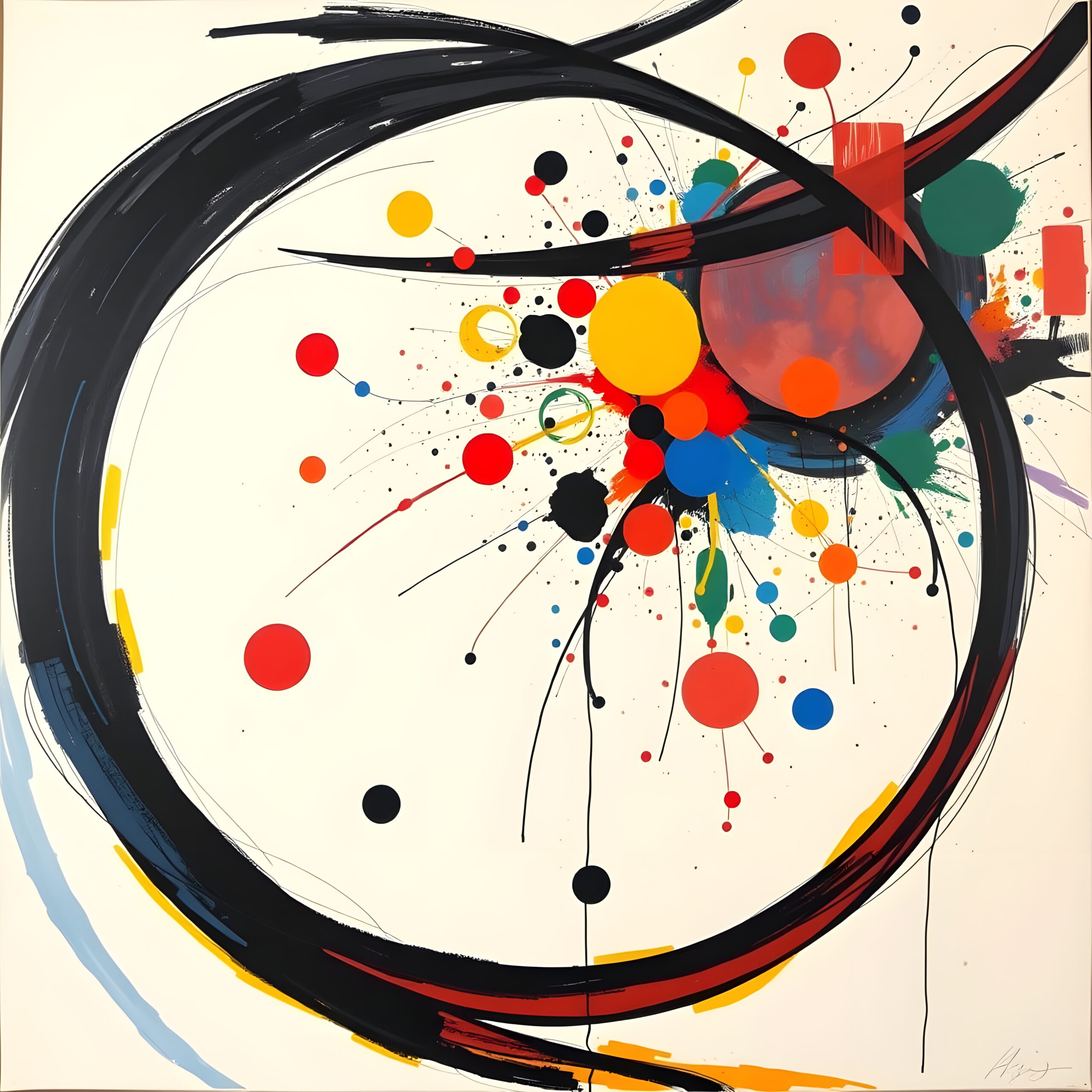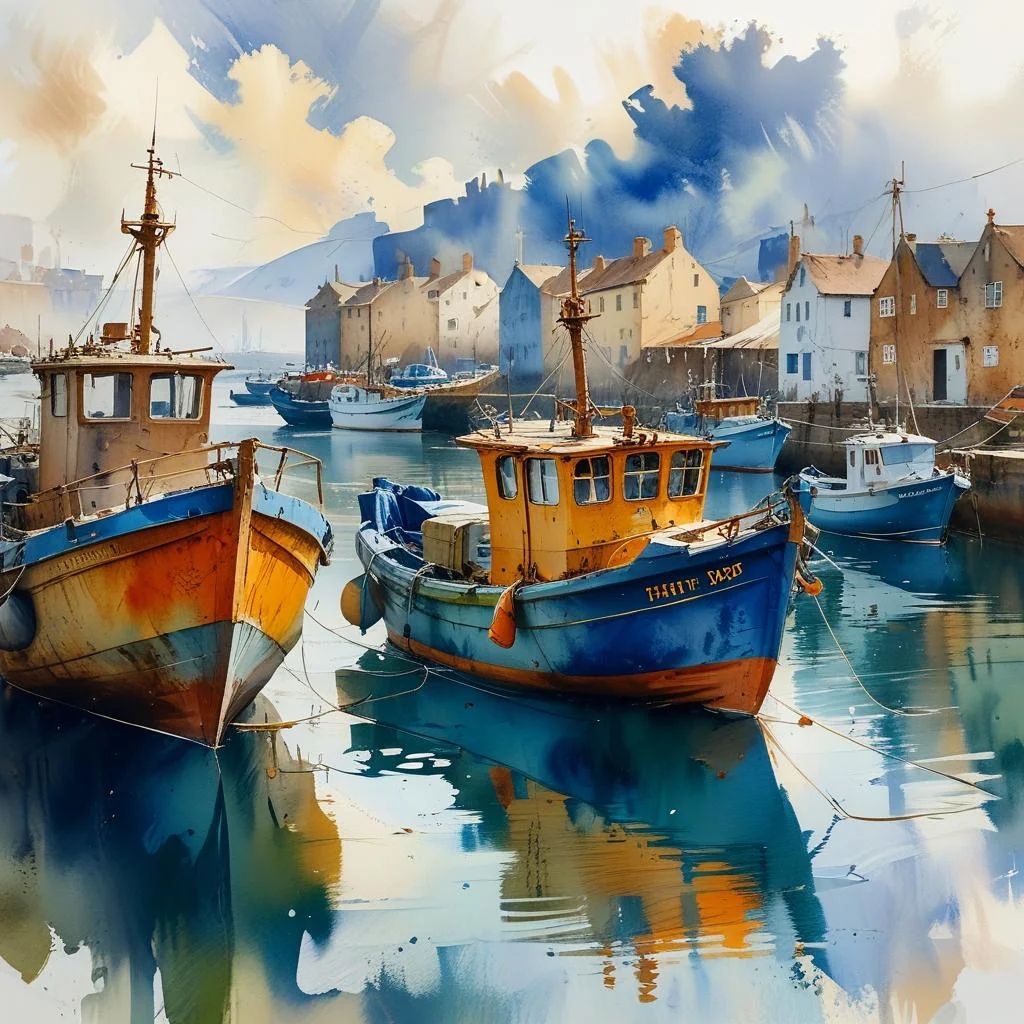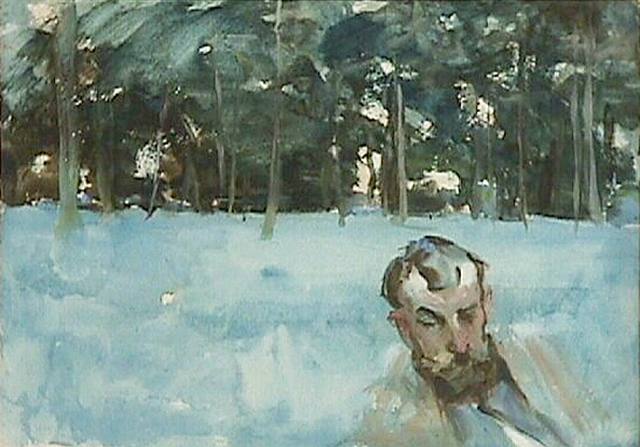Abstract art emerged as one of the most revolutionary movements in art history, challenging traditional representational approaches and opening new possibilities for visual expression. The pioneering top 10 abstract artists who developed abstraction fundamentally altered our understanding of what art could be, using color, form, line, and composition to create works that spoke directly to emotions and ideas without relying on recognizable subject matter.
Key Points Top 10 Abstract Artists
- Abstract art emerged in the early 20th century as a radical departure from representational traditions
- Pioneer artists like Kandinsky, Malevich, and Mondrian developed distinct abstract approaches
- Abstract Expressionism in post-war America brought new energy to the movement
- Women artists like Hilma af Klint and Agnes Martin made significant but often overlooked contributions
- Contemporary artists continue to expand the boundaries of abstraction using new media and techniques
The Birth of Abstraction: Breaking From Tradition
The journey into abstraction began around 1910-1913 when several artists working independently started to abandon representational art. This revolutionary approach wasn’t merely a stylistic choice—it represented a profound philosophical shift in how artists conceived of their relationship with the visible world.
Wassily Kandinsky: The Pioneer of Abstract Expression
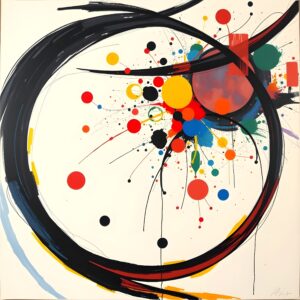
Wassily Kandinsky (1866-1944) is widely credited as the first artist to create purely abstract paintings. A Russian-born painter and art theorist, Kandinsky’s journey into abstraction was deeply connected to his spiritual beliefs and theories about the emotional power of color and form.
In his groundbreaking text “Concerning the Spiritual in Art” (1911), Kandinsky articulated his belief that colors and shapes could directly express inner feelings and spiritual truths without reference to the physical world. His early abstract works feature vibrant colors and dynamic compositions that seem to capture music in visual form.
Kandinsky’s “Composition” series represents some of the earliest and most important abstract works in art history. His exploration of color theory influenced generations of artists who followed.
“Color is a power which directly influences the soul. Color is the keyboard, the eyes are the hammers, the soul is the piano with many strings.”
Wassily Kandinsky
Kazimir Malevich and the Radical Approach
While Kandinsky gradually evolved toward abstraction, Russian artist Kazimir Malevich (1879-1935) made a more dramatic break with his 1915 “Black Square”—a simple black square on a white background that represented one of the most radical gestures in art history.
Malevich called his approach Suprematism, emphasizing the “supremacy of pure feeling” over representational content. His geometric compositions of simple shapes floating in white space represented a spiritual and philosophical approach to art that rejected material reality.
The Grid and Primary Colors: Piet Mondrian
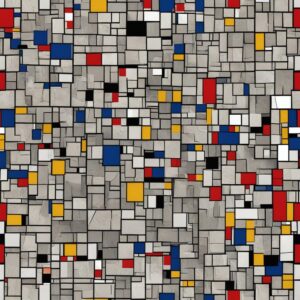
Dutch artist Piet Mondrian (1872-1944) developed his distinctive abstract style through a methodical process of reduction. Beginning with naturalistic landscapes, he gradually simplified forms until arriving at his iconic grid compositions using only primary colors, black lines, and white space.
Mondrian’s work, which he called Neo-Plasticism, represents a search for universal harmony and balance through the most elemental visual language. His influence extends far beyond painting, inspiring architecture, design, and fashion throughout the 20th century.
His careful compositions of geometric shapes demonstrate how restraint and precision can create powerful abstract works.
American Abstract Expressionism: Action and Color
By the 1940s, the center of abstract art shifted to New York, where a group of artists developed what became known as Abstract Expressionism. These artists brought new energy, scale, and spontaneity to abstraction.
Jackson Pollock’s Revolutionary Technique
Jackson Pollock (1912-1956) revolutionized painting through his innovative “drip” or “action” painting technique. By placing canvas on the floor and using sticks, hardened brushes, and even basting syringes to apply paint, Pollock created dynamic, all-over compositions that recorded the movement of his body.
Pollock’s approach emphasized the physical act of painting itself, with the finished canvas serving as a record of the artist’s movements and decisions. His works like “Autumn Rhythm” (1950) and “Lavender Mist” (1950) capture both spontaneous energy and carefully controlled chaos.
Mark Rothko and the Emotional Power of Color
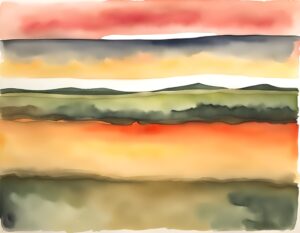
While Pollock’s work was dynamic and energetic, Mark Rothko (1903-1970) created meditative paintings using soft-edged rectangular forms of luminous color. Rothko’s mature style emerged in the late 1940s and consisted of large canvases with stacked rectangular blocks of color with blurred edges.
Rothko insisted his works were not abstract but expressed “basic human emotions—tragedy, ecstasy, doom.” His paintings invite contemplation, creating an immersive experience that can trigger profound emotional responses. The Rothko Chapel in Houston, Texas, featuring fourteen of his dark purple paintings, stands as a testament to the spiritual dimension of his work.
Table: Major Abstract Art Movements and Their Key Characteristics
| Movement | Time Period | Key Characteristics | Notable Artists |
|---|---|---|---|
| Early Abstraction | 1910-1925 | Spirituality, music-inspired forms | Kandinsky, Malevich, Mondrian |
| Abstract Expressionism | 1940s-1950s | Spontaneity, large scale, emotional expression | Pollock, de Kooning, Rothko |
| Color Field Painting | 1950s-1960s | Large areas of flat color, minimalism | Rothko, Newman, Frankenthaler |
| Geometric Abstraction | 1920s-present | Precise geometric forms, mathematical relationships | Mondrian, Albers, Riley |
| Lyrical Abstraction | 1960s-1970s | Fluid, personal expression, return to color | Twombly, Mitchell, Louis |
Willem de Kooning: Between Abstraction and Figuration
Dutch-American artist Willem de Kooning (1904-1997) navigated the boundary between abstraction and figuration throughout his career. His gestural brushwork and fractured compositions brought dynamic energy to abstract expressionism, even when he incorporated figurative elements.
De Kooning’s controversial “Woman” series combined abstract techniques with distorted female figures, challenging easy categorization and demonstrating how abstraction could incorporate representational elements without sacrificing expressive power.
Hidden Pioneers: Women in Abstract Art
While male artists dominated the early narratives about abstract art, several women made pioneering contributions that have only recently received proper recognition.
Hilma af Klint: The Secret Pioneer
Swedish artist Hilma af Klint (1862-1944) created abstract paintings as early as 1906—years before Kandinsky’s first abstractions—but kept them private, stipulating they not be shown until twenty years after her death. Her abstract works, inspired by spiritual beliefs and séances, were finally exhibited in the 1980s, forcing a reconsideration of the timeline of abstract art.

Af Klint’s geometric compositions, spirals, and biomorphic forms anticipated many developments in abstraction, yet she worked in isolation from the mainstream art world. Her use of symbolic images and geometric elements created a unique visual language decades ahead of its time.
Agnes Martin: Minimalism and Meditation
Canadian-American artist Agnes Martin (1912-2004) developed a distinct form of minimalist abstraction featuring subtle grids and lines. Her delicate pencil lines and pale washes of color create meditative works that reward slow, careful viewing.
Martin’s paintings emphasize the hand-drawn quality of her grids, embracing imperfection within her geometrical approach. Her work represents a quiet counterpoint to the bold gestures of abstract expressionism, demonstrating how restraint and subtlety can create powerful abstract statements.
Joan Miró: Between Surrealism and Abstraction
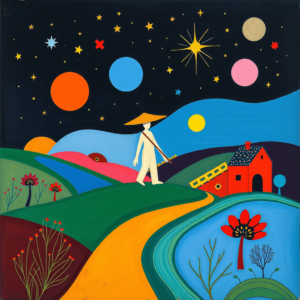
Spanish artist Joan Miró (1893-1983) developed a distinctive visual language that bridged surrealism and abstraction. His playful compositions featuring biomorphic forms, dots, and lines create dreamlike landscapes populated with strange symbols and creatures.
While not purely abstract, Miró’s work pushed painting toward a personal language of signs and symbols that influenced many later abstract artists. His approach to color and composition demonstrates how abstraction can maintain connections to the unconscious mind and imaginative realms.
Contemporary Directions: Gerhard Richter
German artist Gerhard Richter (b. 1932) represents one of the most influential approaches to abstraction in contemporary art. Richter moves fluidly between photorealistic painting and bold abstraction, often using large squeegees to apply and scrape away paint in layers.
Richter’s abstract works challenge the spontaneity of abstract expressionism through their methodical process while maintaining an element of chance in their creation. His approach demonstrates how abstraction continues to evolve through experimentation with new techniques and tools.
The Continuing Relevance of Abstract Art
More than a century after its emergence, abstract art continues to inspire new generations of artists working across media. Digital tools have expanded the possibilities for creating abstract compositions, while installation and video art have extended abstraction into three-dimensional and time-based forms.
Contemporary abstract painters continue to find new approaches, from Julie Mehretu’s complex layered compositions to Cecily Brown’s gestural abstractions that hint at figures and narratives. The techniques pioneered by abstract masters continue to influence artists working in various styles today.
Why Abstraction Endures
What connects the diverse artists discussed above is their belief in the direct expressive power of visual elements themselves—color, line, shape, and texture—apart from their descriptive function. Abstract art speaks to something fundamental in human perception and emotion, creating experiences that can’t be translated into words.
At its best, abstract art doesn’t require extensive explanation or contextual knowledge—it communicates directly through visual means, creating spaces for contemplation, emotion, and personal interpretation. The ten artists highlighted here each found unique paths to this direct expression, expanding our understanding of what art can be and do.
Whether through Kandinsky’s musical compositions, Pollock’s energetic drips, Rothko’s luminous color fields, or Martin’s delicate grids, these pioneering abstract artists created works that continue to move, challenge, and inspire viewers around the world.
Frequently Asked Questions (FAQ)
Q1: Who are the 5 main abstract artists?
While naming just five is tough, some of the most central and influential figures often cited are Wassily Kandinsky, Piet Mondrian, Kazimir Malevich, Jackson Pollock, and Mark Rothko. However, artists like Hilma af Klint, Willem de Kooning, and Lee Krasner are also critically important.
Q2: Who is considered the father/mother of abstract art?
Wassily Kandinsky was traditionally called the “father” for his conscious move to non-representational painting around 1910-1913 and his influential writings. However, the rediscovery of Hilma af Klint’s earlier abstract work (from 1906) makes her a strong contender for the “mother” or at least a crucial, previously unknown pioneer.
Q3: What are the different types of abstract art?
Abstract art is diverse! Major types include:
- Geometric Abstraction: Uses simple shapes like squares, circles, lines (e.g., Malevich, Mondrian).
- Expressive/Gestural Abstraction: Emphasizes the artist’s emotion and physical act of painting (e.g., Kandinsky’s early work, Pollock, de Kooning).
- Color Field Painting: Focuses on large areas of flat, solid color to create immersive experiences (e.g., Rothko, Frankenthaler).
- Lyrical Abstraction: A softer, more fluid, often poetic form of abstraction.
- Minimalism: Reduces art to its most basic elements (often related to geometric abstraction but a later movement).
Q4: What defines modern art?
Modern Art refers to artistic styles developed roughly between the 1860s and the 1970s. It’s characterized by a rejection of traditional techniques and subjects, a spirit of experimentation, and an emphasis on new ways of seeing related to modern life (industrialization, new technologies, psychological theories). Abstraction is a key component of Modern Art. Explore more about modern vs contemporary art here.
Q5: What is the difference between abstract and non-objective art?
These terms are often used interchangeably, but there’s a subtle difference:
- Abstract Art: Usually starts with a real-world subject (person, landscape) but simplifies, distorts, or exaggerates it, focusing on formal qualities over realistic detail. The original subject might still be slightly recognizable.
- Non-Objective Art: Does not start with any reference to the real world. It’s created purely from colors, shapes, and lines for their own sake (e.g., Malevich’s “Black Square”, Mondrian’s grids). All non-objective art is abstract, but not all abstract art is non-objective.

